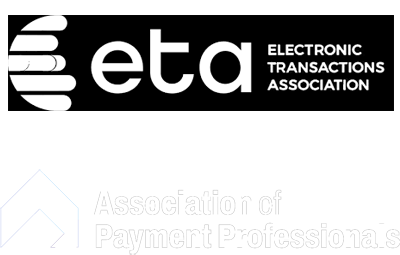12 Sep

Accepting credit cards is essential for businesses in today’s digital age. Whether you have a brick-and-mortar store or operate online, having the right equipment is crucial for a seamless payment process. In this article, we will explore the equipment and software required to accept credit cards and discuss the importance of PCI compliance. Additionally, we will touch upon the future of credit card processing and the advancements in technology that are shaping the industry.
Understanding the Basics of Credit Card Processing
Before diving into the equipment needed, let’s first understand the basics of credit card processing. At its core, credit card processing involves a series of steps that occur when a customer uses their credit card to make a purchase. These steps include the authorization, processing, and settlement of transactions. To facilitate this process, businesses require specific equipment and software.
Credit card processing is a fundamental aspect of modern commerce. It enables businesses to accept electronic payments, providing convenience to customers and facilitating seamless transactions. The process begins when a customer decides to make a purchase using their credit card, whether it’s at a physical store or an online platform.
The first step in credit card processing is authorization. When a customer swipes their card or enters their card details during an online transaction, the merchant’s system sends a request to the credit card network for approval. This request includes information such as the card number, expiration date, and CVV code. The credit card network then communicates with the issuing bank to verify the customer’s identity and check if they have sufficient funds to complete the transaction.
During the authorization process, various security measures are in place to protect against fraud. The system checks for any fraud alerts or suspicious activity associated with the card. This helps ensure that the transaction is legitimate and that the customer’s sensitive information is safeguarded.
Once the authorization is approved, the transaction moves to the processing stage. At this point, the funds are transferred from the customer’s account to the merchant’s account. This transfer occurs electronically, typically within a matter of seconds. The credit card network acts as the intermediary, facilitating the secure transfer of funds between the customer’s issuing bank and the merchant’s acquiring bank.
Finally, the settlement process occurs. During this stage, the funds that were transferred from the customer’s account are deposited into the business’s bank account. Settlement can happen on a daily or batch basis, depending on the merchant’s preferences and agreements with their acquiring bank. This ensures that the merchant receives the funds for the transactions they have processed.
The Role of Merchant Accounts in Credit Card Processing
Merchant accounts play a vital role in credit card processing. A merchant account is a type of bank account that allows businesses to accept credit card payments. It serves as a holding place for the funds that are transferred from the customer’s account during the processing and settlement stages.
When a customer makes a purchase using a credit card, the transaction amount is initially held in the merchant account. This ensures that the funds are available to cover any potential chargebacks or refunds. Once the settlement process is complete, the funds are released from the merchant account and deposited into the business’s designated bank account.
Merchant accounts are typically set up through a financial institution or a payment service provider. To open a merchant account, businesses must go through an application process that involves providing relevant information about their business, such as their industry, sales volume, and processing history. This information helps the financial institution assess the risk associated with the merchant and determine the appropriate terms and fees for the account.
In addition to facilitating the transfer of funds, merchant accounts also provide businesses with access to reporting and analytics tools. These tools allow merchants to track their sales, monitor transaction trends, and gain insights into their customers’ purchasing behaviors. This information can be valuable for making informed business decisions and optimizing sales strategies.
How Credit Card Processing Works
When a customer makes a purchase using a credit card, the credit card terminal or software initiates the authorization process. This involves verifying the card details, ensuring that the customer has sufficient funds, and checking for any fraud alerts. Once the authorization is approved, the transaction moves to the processing stage, where the funds are transferred from the customer’s account to the merchant’s account. Finally, the settlement process occurs, where the funds are deposited into the business’s bank account.
During the authorization process, the credit card terminal or software securely communicates with the credit card network and the issuing bank. This communication involves encryption and other security measures to protect the customer’s sensitive information from unauthorized access. The authorization request includes not only the card details but also the transaction amount and other relevant information.
After the authorization is approved, the processing stage begins. The credit card network facilitates the transfer of funds by debiting the customer’s account and crediting the merchant’s account. This process happens in real-time, ensuring that the funds are available for the merchant to use or withdraw.
Once the funds have been transferred, the settlement process takes place. The acquiring bank, which holds the merchant account, initiates the settlement by depositing the funds into the business’s designated bank account. The timing of settlements can vary depending on the merchant’s agreement with their acquiring bank, with some businesses receiving daily deposits and others receiving batch deposits at regular intervals.
It’s important to note that credit card processing involves various parties working together to facilitate seamless transactions. These parties include the credit card networks (such as Visa, Mastercard, or American Express), the issuing banks, the acquiring banks, and the merchant account providers. Each party plays a specific role in ensuring the security and efficiency of the credit card processing ecosystem.
Essential Hardware for Accepting Credit Cards
Now that we have a basic understanding of credit card processing let’s explore the essential hardware required to accept credit cards.
Credit Card Terminals
Credit card terminals are a common piece of equipment used by businesses to accept credit card payments. These terminals come in various forms, including countertop or wireless options. They enable customers to swipe or insert their credit cards for payment. Some terminals even have touchscreens for an enhanced user experience.
Point of Sale (POS) Systems
Point of Sale (POS) systems have gained popularity in recent years due to their versatility. These systems are equipped with software that not only processes credit card payments but also manages inventory, generates sales reports, and facilitates customer loyalty programs. POS systems typically consist of a touchscreen monitor, a cash register, barcode scanner, and a credit card terminal.
Mobile Card Readers
For businesses on the go or those operating at events, mobile card readers offer a convenient solution. These compact devices connect to a smartphone or tablet and allow businesses to accept credit card payments anywhere with an internet connection. Mobile card readers are especially popular among small businesses and service providers.
Software Requirements for Credit Card Processing
In addition to hardware, businesses must also consider the software requirements for credit card processing.
Payment Gateway Software
A payment gateway software acts as a bridge between the payment processing networks and the merchant’s website or POS system. It securely captures and encrypts customer payment information, authorizes transactions, and facilitates the transfer of funds. Payment gateway software is essential for online businesses that process payments through their websites.
Virtual Terminal Software
Virtual terminal software allows businesses to accept credit card payments without the need for physical card readers. This software turns any computer or mobile device with internet access into a virtual terminal, enabling businesses to manually enter customer card details for secure payment processing.
Mobile Payment Apps
In recent years, mobile payment apps have gained significant traction. These apps allow customers to link their credit cards to their mobile devices and make payments by simply tapping or scanning their devices. Businesses can tap into this trend by integrating mobile payment apps into their payment system to provide a seamless and convenient payment experience.
The Importance of PCI Compliance in Credit Card Processing
As businesses handle sensitive customer information, it is crucial to prioritize PCI compliance.
What is PCI Compliance?
PCI compliance refers to adhering to the requirements set by the Payment Card Industry Data Security Standard (PCI DSS). These standards aim to protect customer data during credit card transactions, ensuring it is processed and stored securely. Compliance helps businesses mitigate the risk of data breaches and safeguards the trust of their customers.
Ensuring Your Equipment is PCI Compliant
To maintain PCI compliance, businesses need to ensure that their equipment meets the necessary requirements. This includes having secure card readers, utilizing encrypted software, and regularly updating systems. It is recommended to work with a reputable payment service provider who can assist in achieving and maintaining compliance.
The Future of Credit Card Processing
As technology continues to evolve, the future of credit card processing looks promising, with advancements that will further enhance the payment experience.
Contactless Payments and NFC Technology
Contactless payments, enabled by Near Field Communication (NFC) technology, are gaining popularity. This technology allows customers to make payments by simply tapping their credit cards or mobile devices on a contactless-enabled terminal. With faster transaction times and increased convenience, contactless payments are set to become the norm.
The Rise of Mobile Wallets
Mobile wallets, such as Apple Pay and Google Pay, are revolutionizing the payment industry. These digital wallets securely store credit card information on mobile devices, allowing customers to make payments with a simple touch or tap. As mobile wallet adoption increases, businesses need to adapt by integrating these payment options into their systems.
The Impact of Cryptocurrencies on Credit Card Processing
Cryptocurrencies, such as Bitcoin, have emerged as an alternative form of payment. While still in the early stages, cryptocurrencies have the potential to disrupt the traditional credit card processing landscape. As businesses explore the acceptance of cryptocurrencies, they will need to integrate specialized software and hardware solutions to enable these transactions securely.
Conclusion
To accept credit cards, businesses require both hardware and software solutions. From credit card terminals and POS systems to payment gateway software and mobile card readers, each component plays a crucial role in ensuring smooth and secure transactions. Additionally, PCI compliance is essential for safeguarding customer data and maintaining trust. As technology continues to advance, businesses must stay informed about the latest trends and embrace innovations such as contactless payments, mobile wallets, and even cryptocurrencies. By leveraging the right equipment and software, businesses can provide a seamless and hassle-free payment experience for their customers. Using PayBlox.com will save you time and stress by bringing payment processors to you. You will get multiple offers from providers and beagle to review the equipment before you complete an application.






